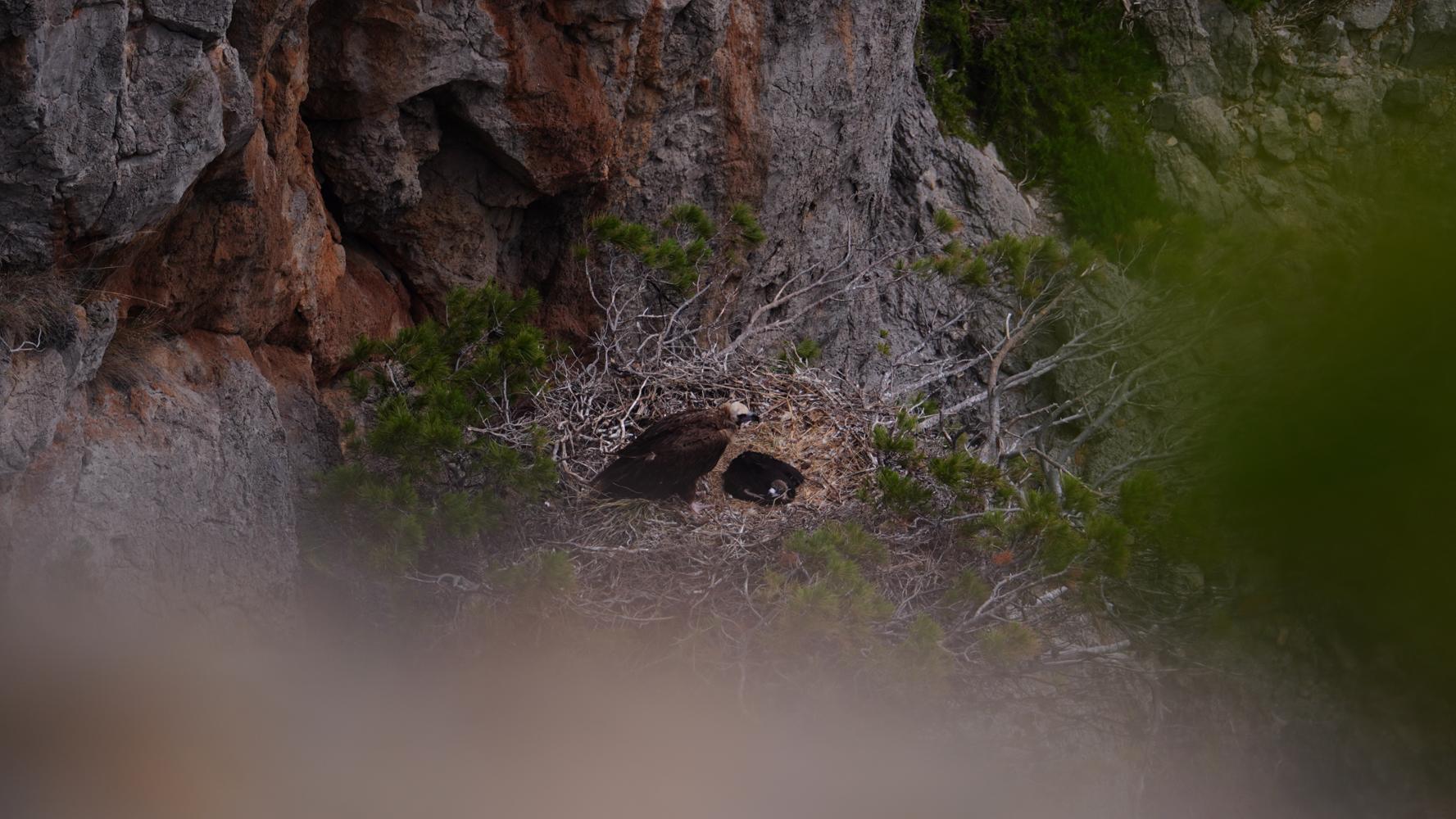Since the implementation of the recovery plan, the species has maintained a positive trend.
TDB keeps you informed. Follow us on Facebook, Twitter and Instagram.
This year’s black vulture breeding has ended with a total of 33 successful chicks, out of the 41 pairs that have been recorded this year in the Serra de Tramuntana natural park. These young birds are starting to take flight now, during the month of September, some four months after hatching.
The number of hatchlings is similar to that of 2019, when the maximum number, 34, was achieved since counting began for the first time, following the implementation of the recovery plan in 1982. This year, 20 specimens were counted and the risk of extinction was confirmed. Since then, the evolution has been positive, bearing in mind that between 1980 and 1985, five nests were identified and there were less than two fledglings per year.
As for the griffon vulture, 21 chicks have been counted, 6 of which were born in the new breeding area detected this summer, further inland in Mallorca. The establishment of a new nesting area could have been the reason for the six more chicks than last year when 24 pairs were counted and 15 chicks were born. This is similar to the number recorded in the previous five years.
This is the result of the count carried out by the Environmental Agents for the Species Protection Service, which is part of the monitoring provided for in the Pla Terrasse for the Recovery, Conservation and Monitoring of diurnal birds of prey in the Balearic Islands. In addition, among the actions of the ARES II Project (Actions for the Recovery of Wild Species), two black vulture chicks have been tagged with GPS transmitters to better understand their biology and their movements around the island in search of food and dispersion, information that can be of capital importance, for example, in matters of air safety.
This year’s data confirm the maintenance of the two populations. It should be borne in mind, however, that this species lays only one egg per year and that disturbance in the breeding areas can lead to the failure of the clutch. It is therefore important to respect paths and restrictions on a passage in natural areas.
In addition, the last census of the total black vulture population, last October, counted 332 birds, three times more than ten years ago, when 123 were counted.
Currently, the black vulture is out of critical danger thanks to the recovery programme initiated forty years ago. It is currently listed as vulnerable in the Balearic Catalogue of Threatened Species and the aim is to maintain the species until an adequate demographic level is achieved.
